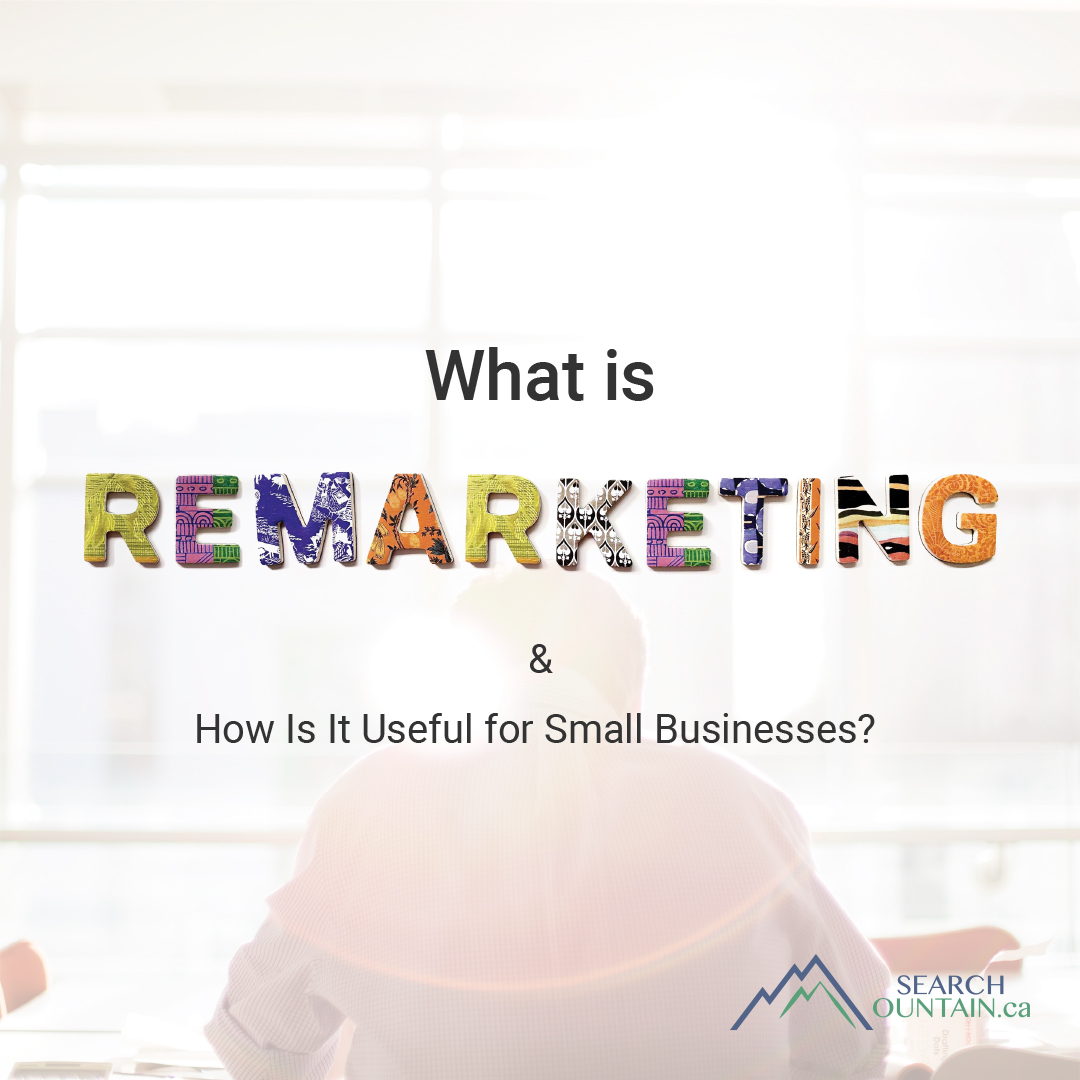Remarketing is one of the most useful tools for small business.
A common misconception is that consumers hate ads on their websites. According to a recent report, 25.8% of users now use adblock. This high rate of usage seems to support the idea that people do not like ads. But a recent report by Hubspot says that this is not the case.
Customers actually do not mind ads all that much; they simply do not want to see irrelevant ads. 77% of the people surveyed reported that they would prefer to use an ad-filtering program than a complete ad-block. Brands that are able to filter out important audience excel at digital ads.
Tapping into consumer interests can engage these online users. According to Adroit Digital, nearly 60% of online buyers in the United States indicated that they noticed the ads that appear for products they had researched on other sites. This means that engaging consumers through remarketing ads catch the attention of consumers.
What is remarketing?
Remarketing involves targeting customers who have already viewed something on your site or demonstrated an interest in your products. It offers a means of re-engaging customers who might have been browsing pages on your site but did not follow through with a conversion.
Conversion doesn’t necessarily mean a sale, conversion could mean that they didn’t leave their email or subscribe to your list; follow you on social media; filled out a survey form; etc. 70-96% of users visit a website only to leave without taking action. A small business should take advantage of their interest in your brand and convince them to come back by using remarketing.
A remarketing program will allow you to track certain pages on your website. This will allow you to identify the customers who spent time on those pages without converting. For example, many brands will track their shopping cart pages, so they can target those who abandon their shopping carts.
Once you have identified your goals, you can then display specialized ads that promote the products they already viewed. These ads will be highly personalized and promote items that people already showed an interest in, increasing their relevance.
Consider that according to AdRoll, typically only 2% of consumers will convert the first time they visit a website. This makes remarketing a valuable tool to entice customers to return and complete a conversion.
A statistic cited by CMO found that as many as a quarter of customers also report that they enjoy retargeting ads. They appreciate them because the ads offer reminders of products and brands that the consumer had been interested in before. This means that these ads spark their interest more than standard ads.
Remarketing ads are proven to be effective. Kimberly-Clark reports that they see as much as a 50-60% higher conversion rates for those who receive retargeting ads. Another study by Digital Remedy found that general ad response went up by as much as 400%. Meanwhile, comScore reports that retargeted ads can increase the rate of branded search by as much as 1,046%.
Those who want to build a successful remarketing ad campaign should invest in outsourcing this line of work to companies like Search Mountain to get the most out of their marketing efforts.
Understanding the different types of Remarketing
There are several types of remarketing that brands can use to re-engage their customers online.
Brands can select the ones that will work the best for their organization. Some of the most popular options are:
Ad displays for people who have visited your site
These ads can appear in two main types of platforms.
Those who set up their remarketing campaigns through Google Ads will have their remarketing ads appear throughout the Google display network. Remember that Google Ads offers the largest platform for PPC, making it an excellent way of reaching millions of searchers throughout the country and around the world.
You can also set up these display ads on a number of social media platforms. Facebook and Twitter, for example, both offer their own ad display platforms. Considering that Facebook reaches over a billion people around the world, this also provides a great platform for reaching prospects.
Email remarketing
Email remarketing allows you to target people on your email list while they journey elsewhere through the digital ecosystem. You can create ad campaigns specifically for those who open your emails.
Since the people who open your emails already demonstrate their interest in what you have to offer, using email remarketing helps you keep your brand on their mind. You know that they have some interest in your products and services, which opens the door for you to bring them back to your website further down your sales funnel.
Remarketing list search ads
In addition to displaying ads on other websites throughout the web for remarketing targets, you can also display ads on the search engines themselves. With these remarketing ads, you will be able to target those who have visited your website and are searching for certain terms online.
Search retargeting
Search retargeting offers a unique form of retargeting. With this form, you can find customers who have searched for terms and looked at products that are similar to your own offerings, but they haven’t visited your website yet.
This form of retargeting allows you to broaden your reach.
Video remarketing
Through Google, you can also display ads to people on YouTube. People who have visited your channel or your videos can be retargeted through ads while they browse elsewhere on the Google display network.
How to build a successful campaign
If you now understand what is remarketing, here are 6 steps you can use to build an effective campaign.
Step 1. Determine which pages you want to tag and how to segment your campaign.
The first step in remarketing is deciding which pages you want to tag for the campaign. A quality remarketing campaign will identify high-value pages.
Not only will customers who visited pages further through your sales funnel be more likely to respond to retargeting ads, but it will also be easier to identify the precise content that interests them. Instead of showing general brand information, your retargeting ad could show content specific to what they sought on your website.
For example, brands may want to bid more on their shopping cart abandons or conversion pages that were interrupted. There might be people who had visited your page to get a free ebook, for example, but clicked away before finishing the conversion form.
Step 2. Consider offering special coupons and deals for your retargeted consumers.
In your remarketing campaign, you will want to offer ads that help you to get to the core of why people abandoned your shopping cart or other conversion page. Coupons or special deals can be an excellent way to bring these people back to your page.
People want to feel as though they have found special deals. Offering people who already visited your page special coupons will help convince them that they have found a special deal for your products. This will incline them to visit your page.
By monitoring the success of these campaigns, you will also be able to better understand what people respond to most. You will have a better idea of some of the causes of shopping cart abandonment by seeing which types of deals and coupons bring back the most customers. This may help you identify potential solutions to decrease your shopping cart abandonment rate.
Step 3. Consider how long you want to follow your past visitors with the ads.
An important part of understanding what is remarketing is knowing your customers. You must carefully gauge the line between providing customers with personalized ads and annoying them by following them endlessly around the internet.
Step 4. Consider targeting your post-conversion customers with remarketing campaigns
Although many people who understand what is remarketing know the value of targeting those who drop out of the sales funnel, it can also be valuable for targeting those who have converted on your site. You will likely have two main groups of post-conversion customers.
- Those who converted in a non-monetary way, such as downloading an ebook or signing up for a rewards program.
- Those who made an actual purchase.
Both of these groups can benefit from a well-constructed remarketing campaign.
With the first group, you know that these customers recognize your value. They have signed up to receive information from you. Continue to nurture that interest with your ads. You can remarket to them with information about other services and features your brand offers.
You might promote an upcoming webinar that fits their interests. You might also let them know about sales or deals you offer for first-time customers. Encourage them to come back to your website and continue to learn more about your organization.
With the second group, you can tap into their expressed interest in your company. They have already made a purchase, so let them know how much you care about them. You can offer returning-customer deals and alert them to new products you offer. According to BIAKelsey, 61% of SMBs report that returning customers are responsible for more than half of their revenue. Tap into this important source of growth with your remarketing campaign.
Step 5. Target broader keywords than you would normally
You likely do not build many of your ad campaigns around broad search terms. After all, you do not want to waste money on high numbers of clicks for irrelevant traffic. Instead, you want to use precise terms that will boost your chances to bring only your targeted audience to the page.
To understand what is remarketing, you must also know how it differs from regular PPC. When you run a remarketing campaign, you have the opportunity to expand your reach. Since the only people who will see your ad will be those who have already expressed an interest in your brand, you can be more confident in your traffic.
Someone on a remarketing list has already indicated their interest in your industry. This means that the likelihood is greater that their broad searches do pertain to you. You can therefore create campaigns that target these terms.
Doing so can help you control costs. It will also allow you to maximize the power of your remarketing campaign by reaching as many former site visitors as possible.
Step 6. Monitor your campaigns and make adjustments as needed.
As you better understand what is remarketing and send out your campaigns, you will want to carefully monitor each aspect to see what performs well and what needs some adjustments.
Look at your response rates. See how many people click on the ad. This will let you know how well your ad copy entices those who had already visited important pages on your website. If you have a low click-through rate, you might want to consider adjusting what you promote. For example, some brands will find that free shipping promotions perform better than deals for 10-15% off.
You also want to look at how your ads track over time. Decreases in interest after the first few runs might indicate that your ad copy becomes stale or, as already discussed, that you follow customers for too long after their visit to your site. Try and change up the copy after a certain duration to see if you can re-establish your higher rates. If not, you might want to consider shortening the amount of time you display your ad to past visitors.
If you see a high click-through rate but you do not have the conversions to match, you want to look at the alignment between your ad, your customer, and your page. See if there might be other reasons that people do not want to convert on your page.
Remarketing can be a valuable and productive means of enticing customers who have already expressed an interest in your business or products. Instead of trying to figure out on your own who your most likely buyers will be based on what they search for or their social media demographics consider hiring a full-service marketing agency like Search Mountain to incorporate this strategy into your next PPC campaign.





